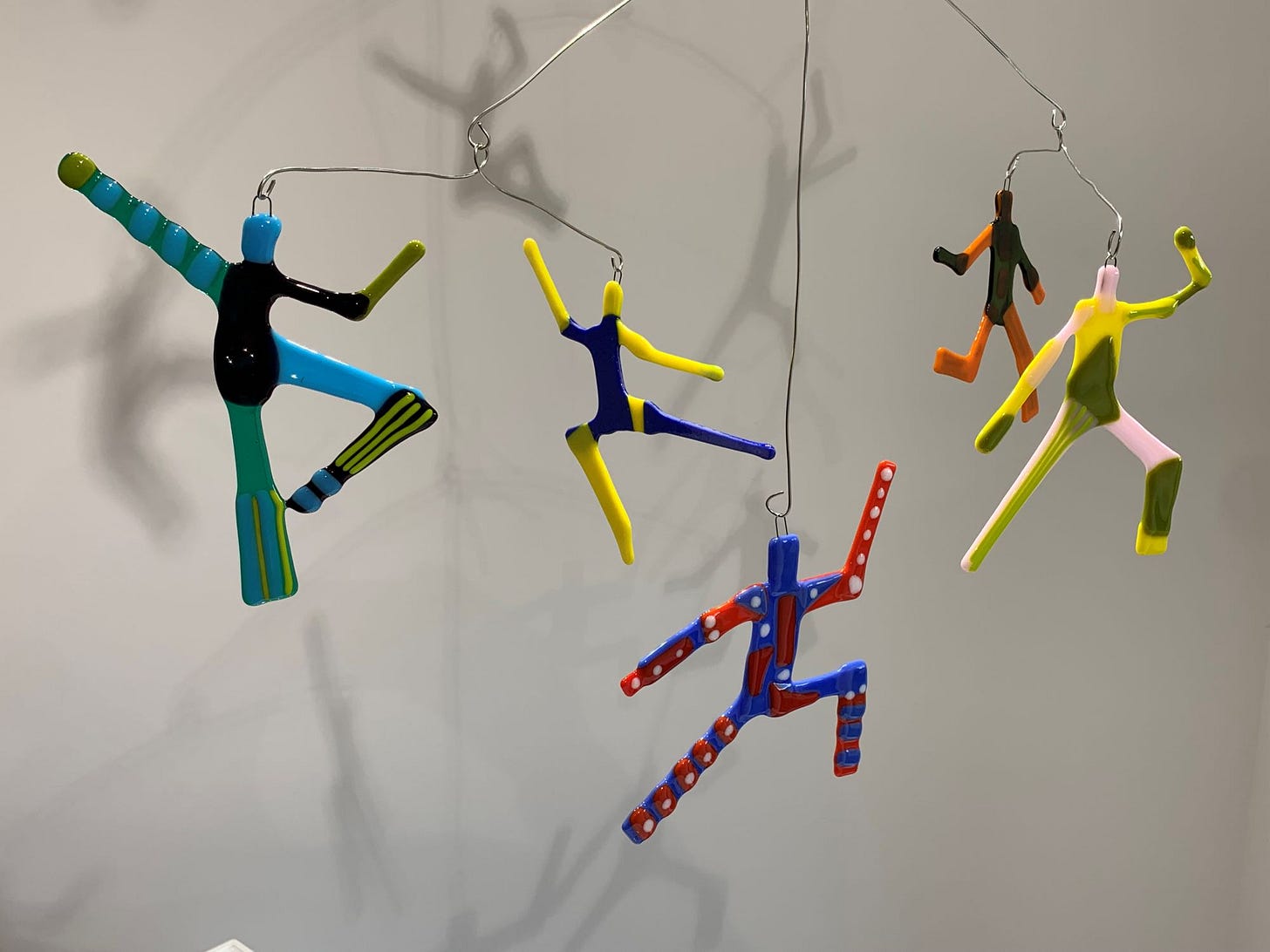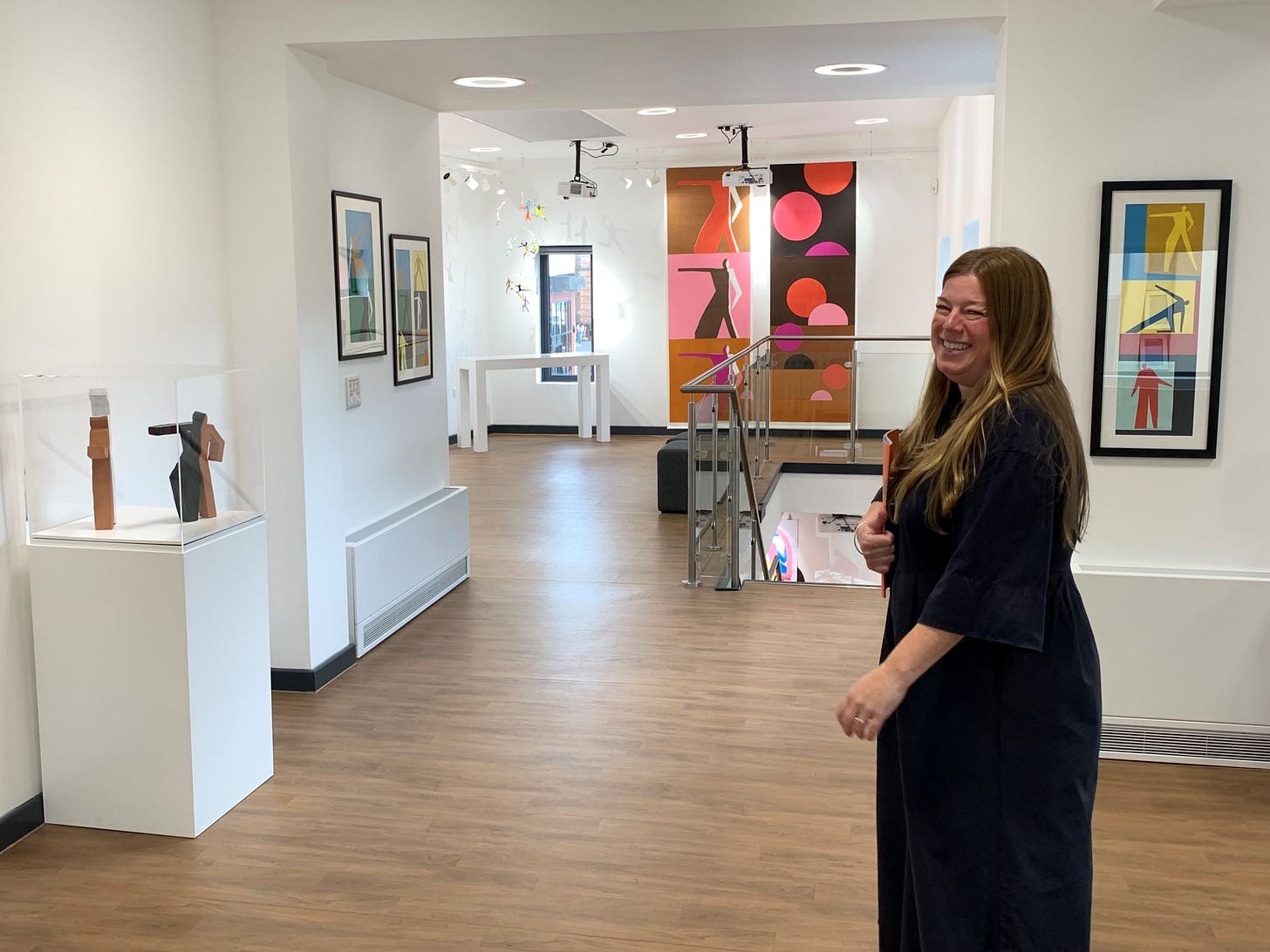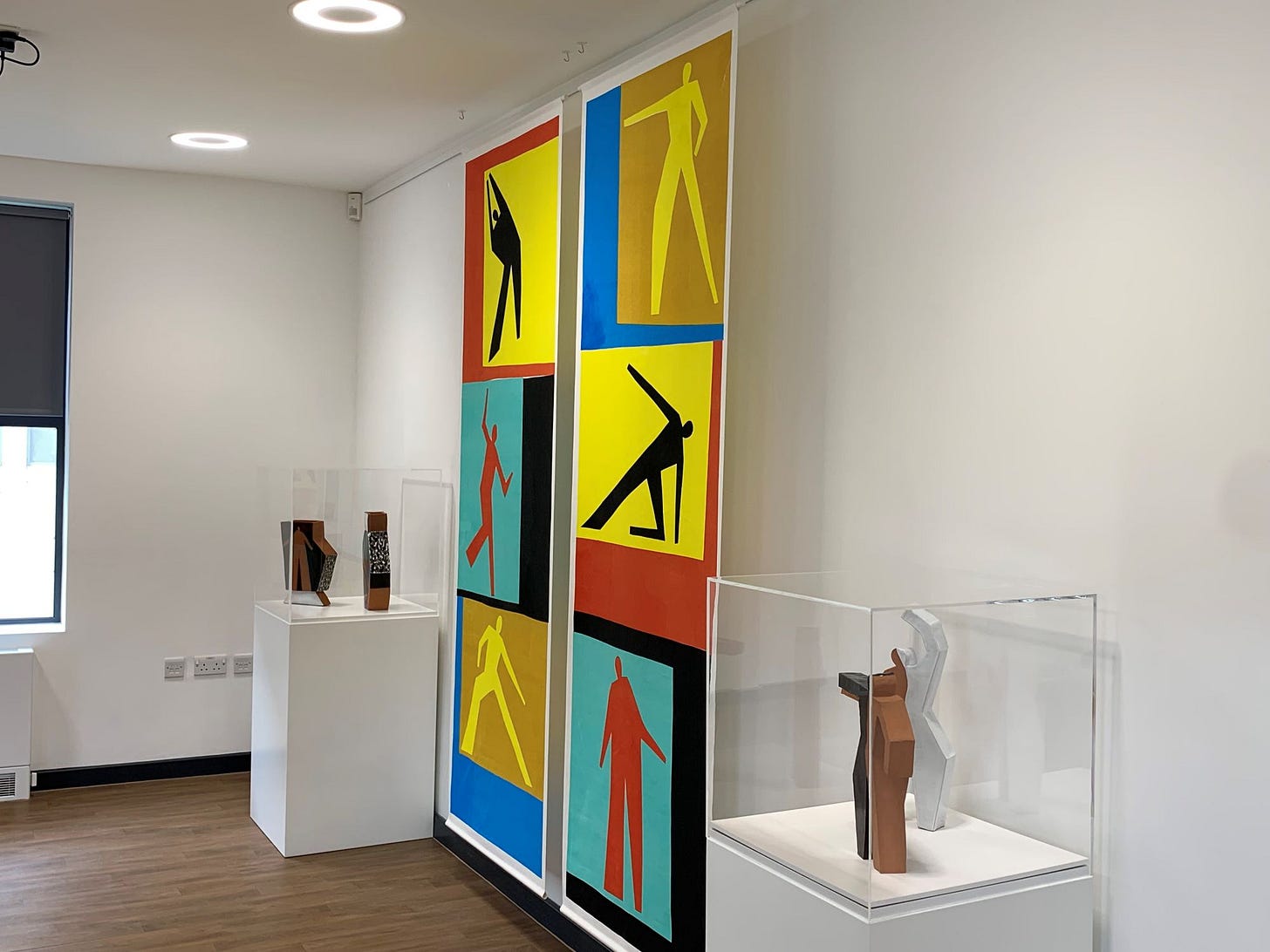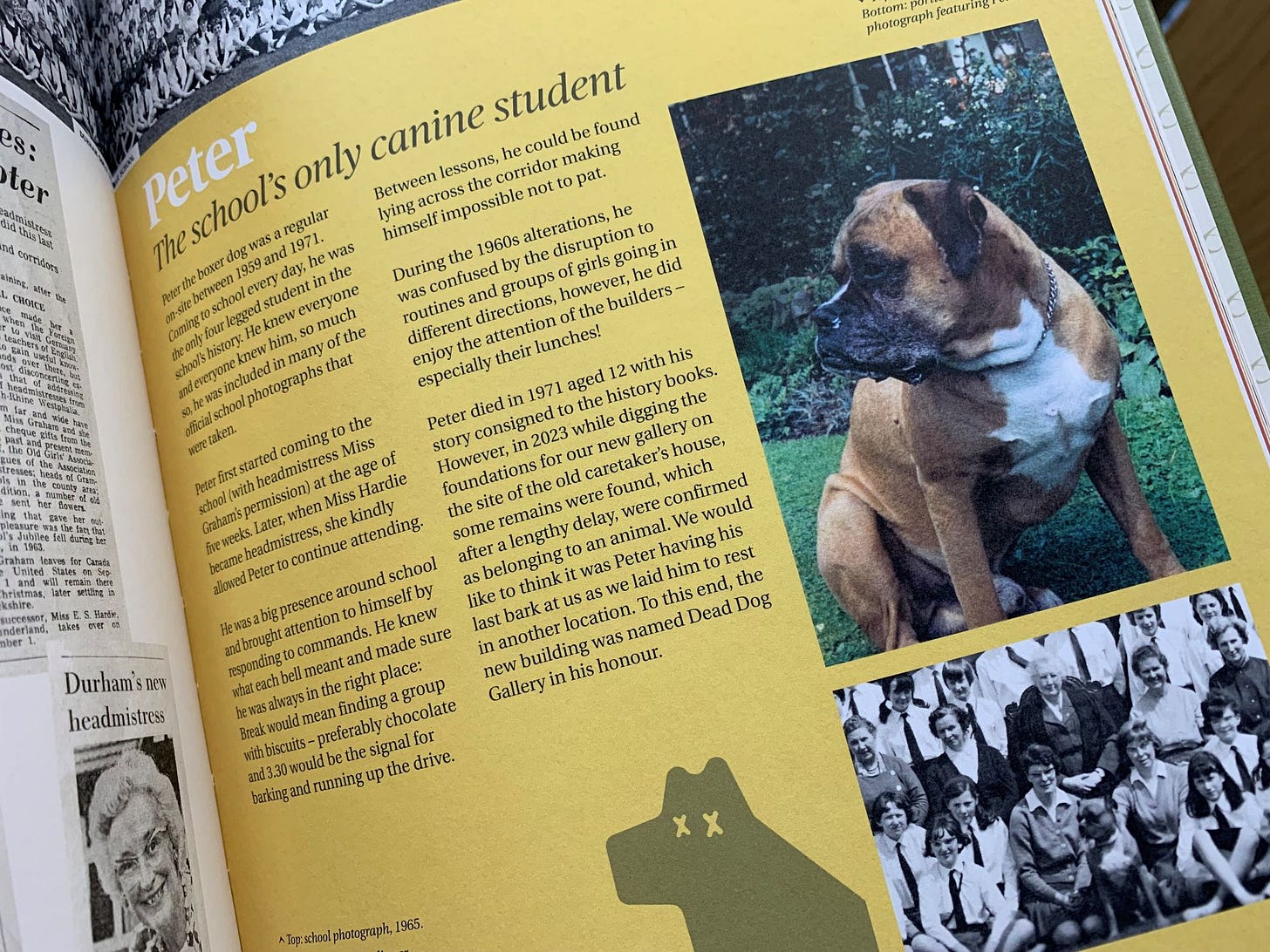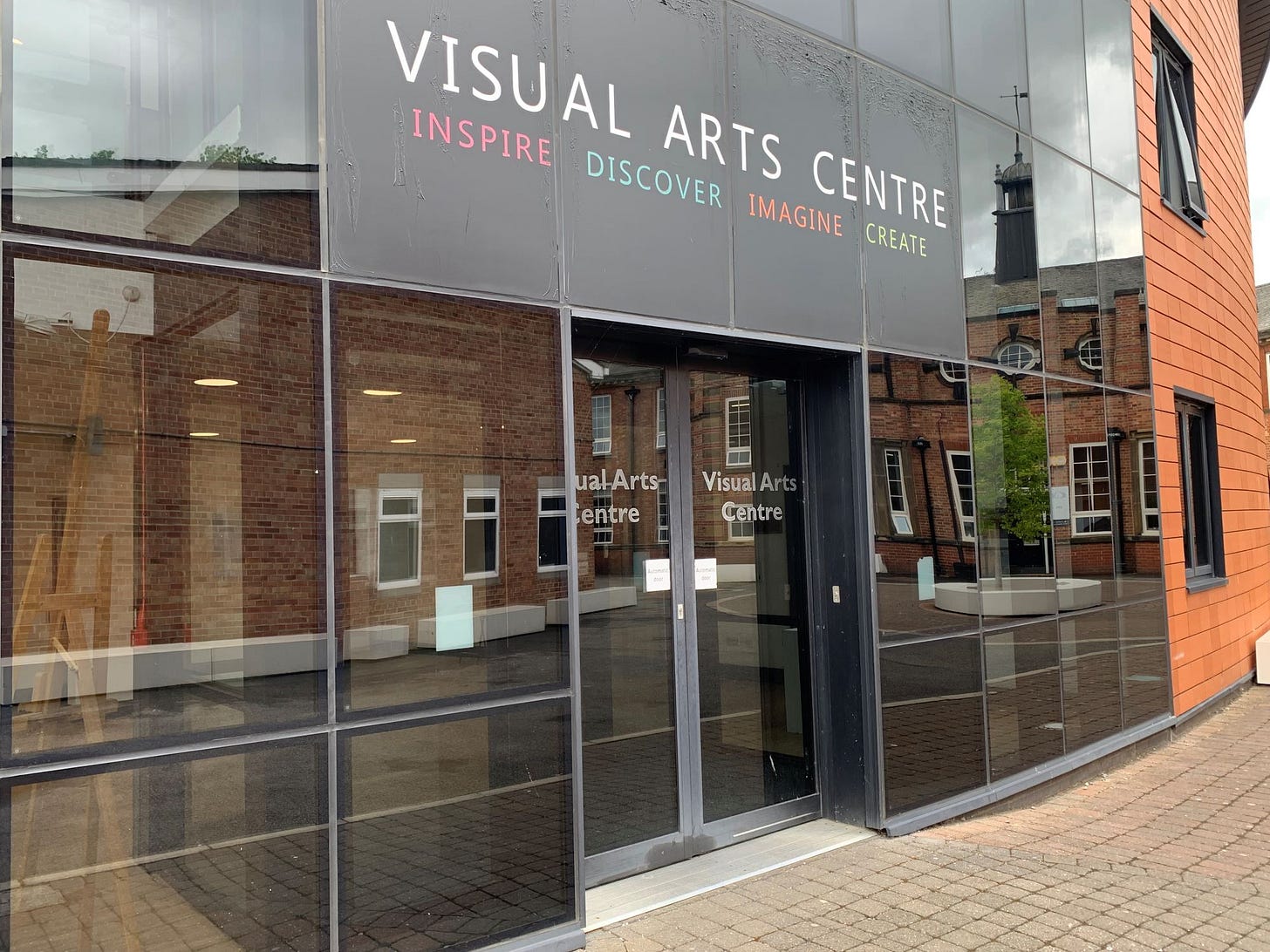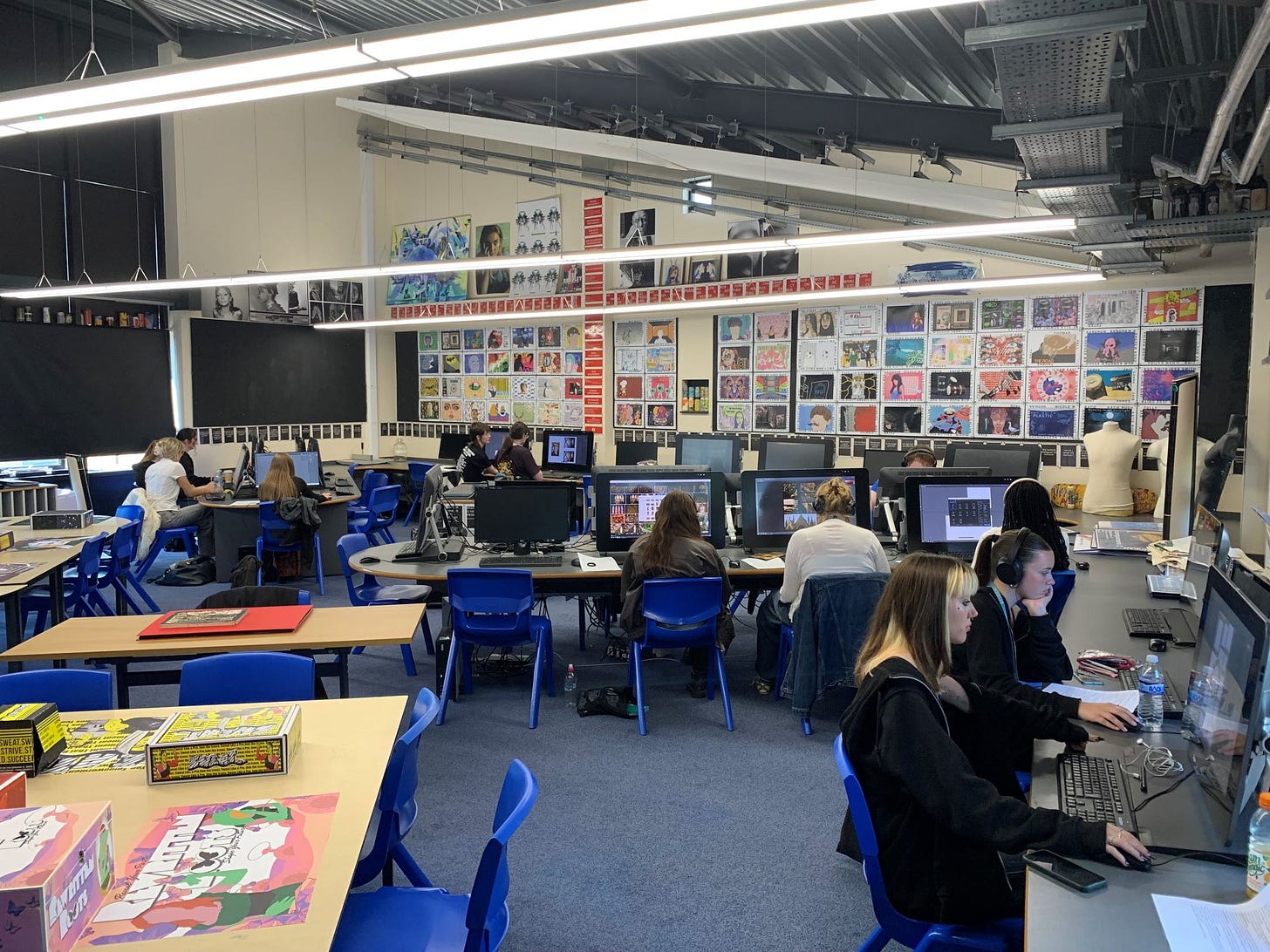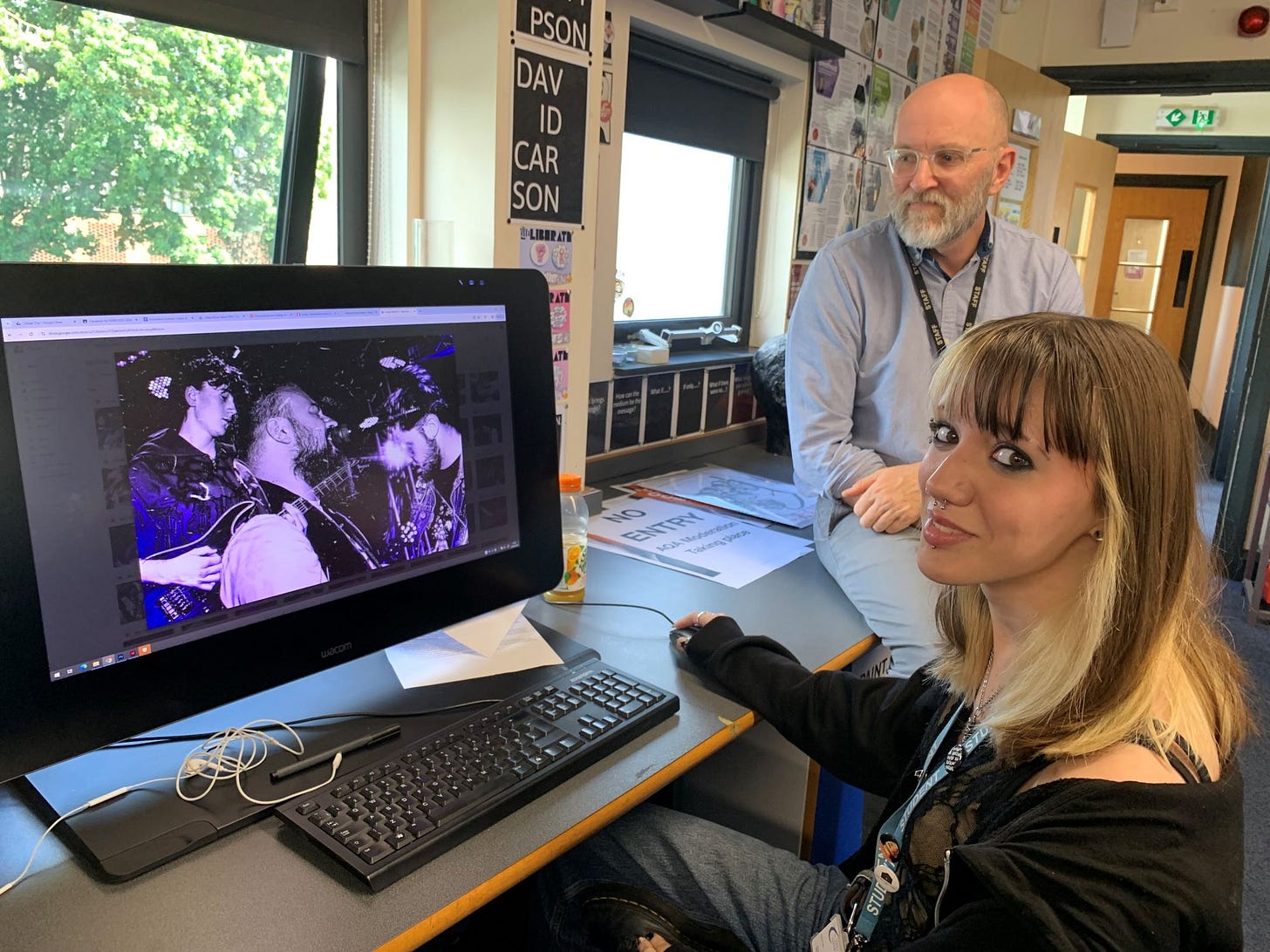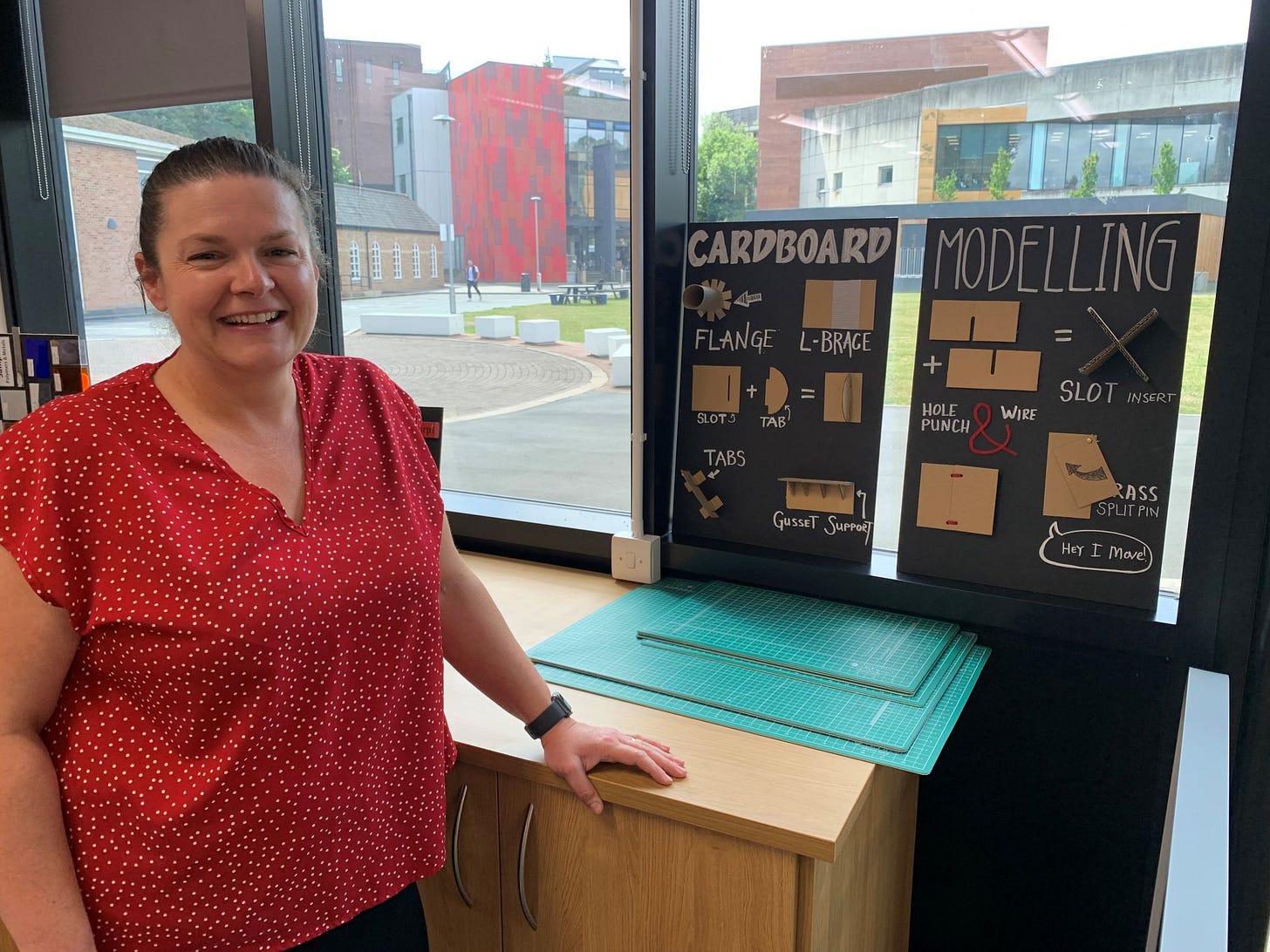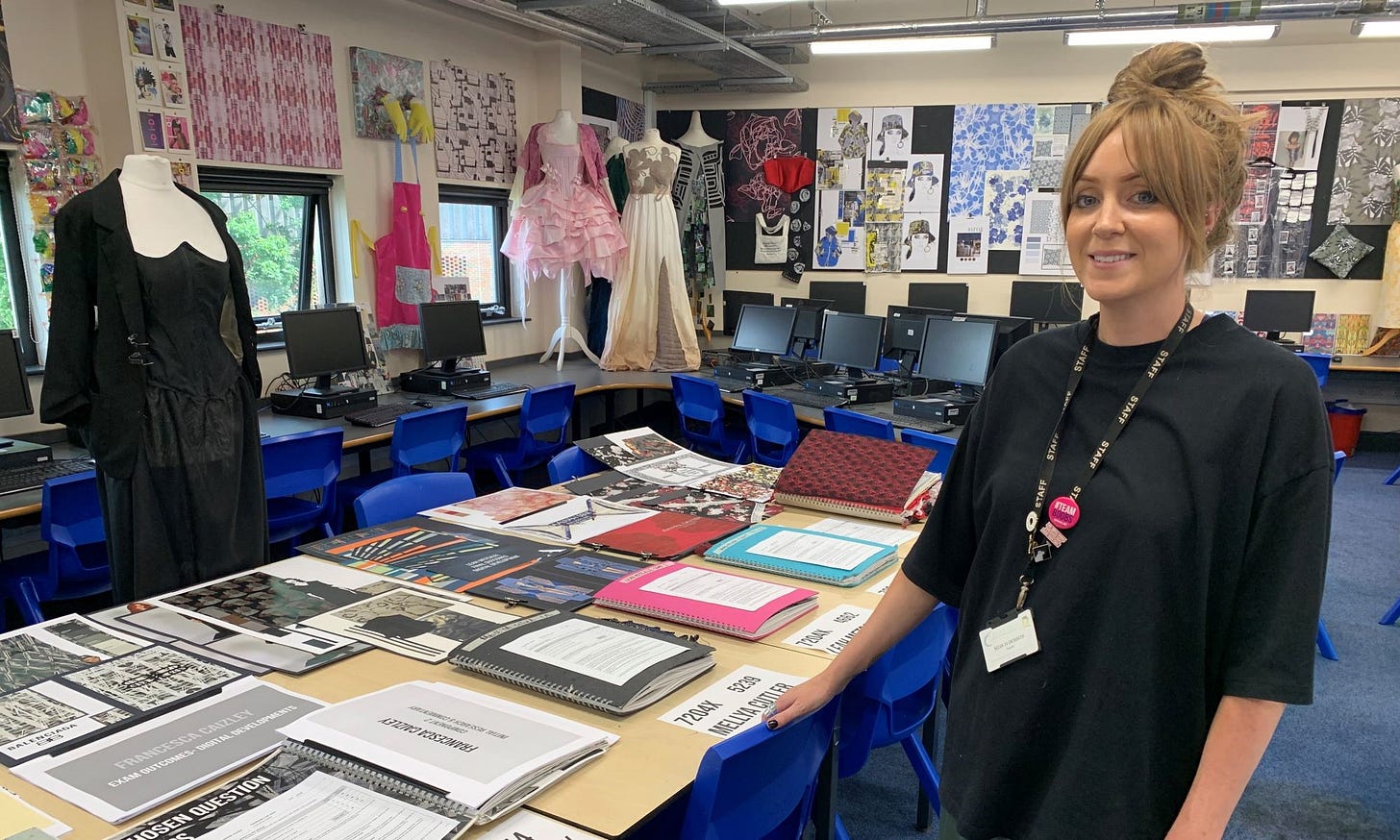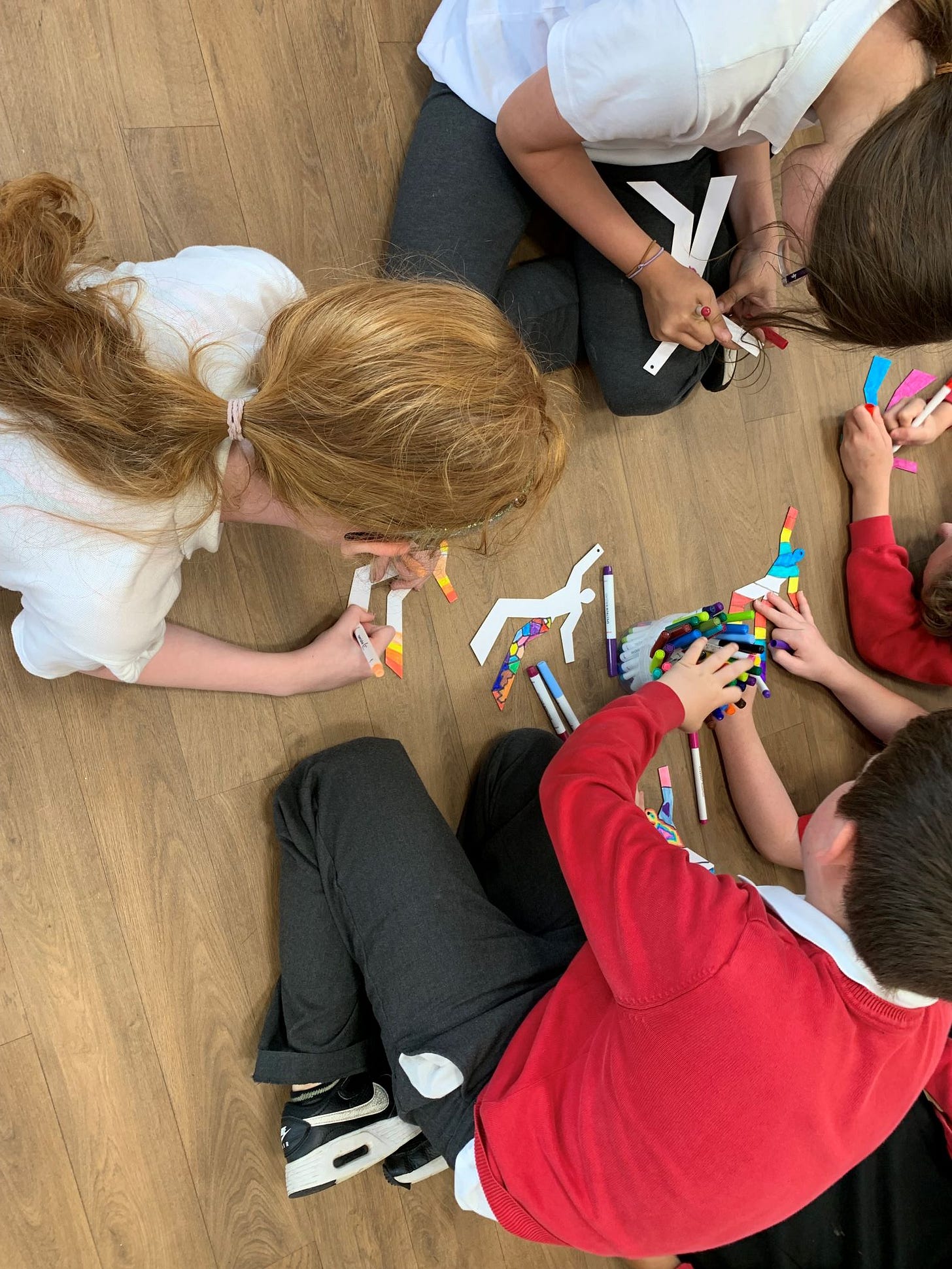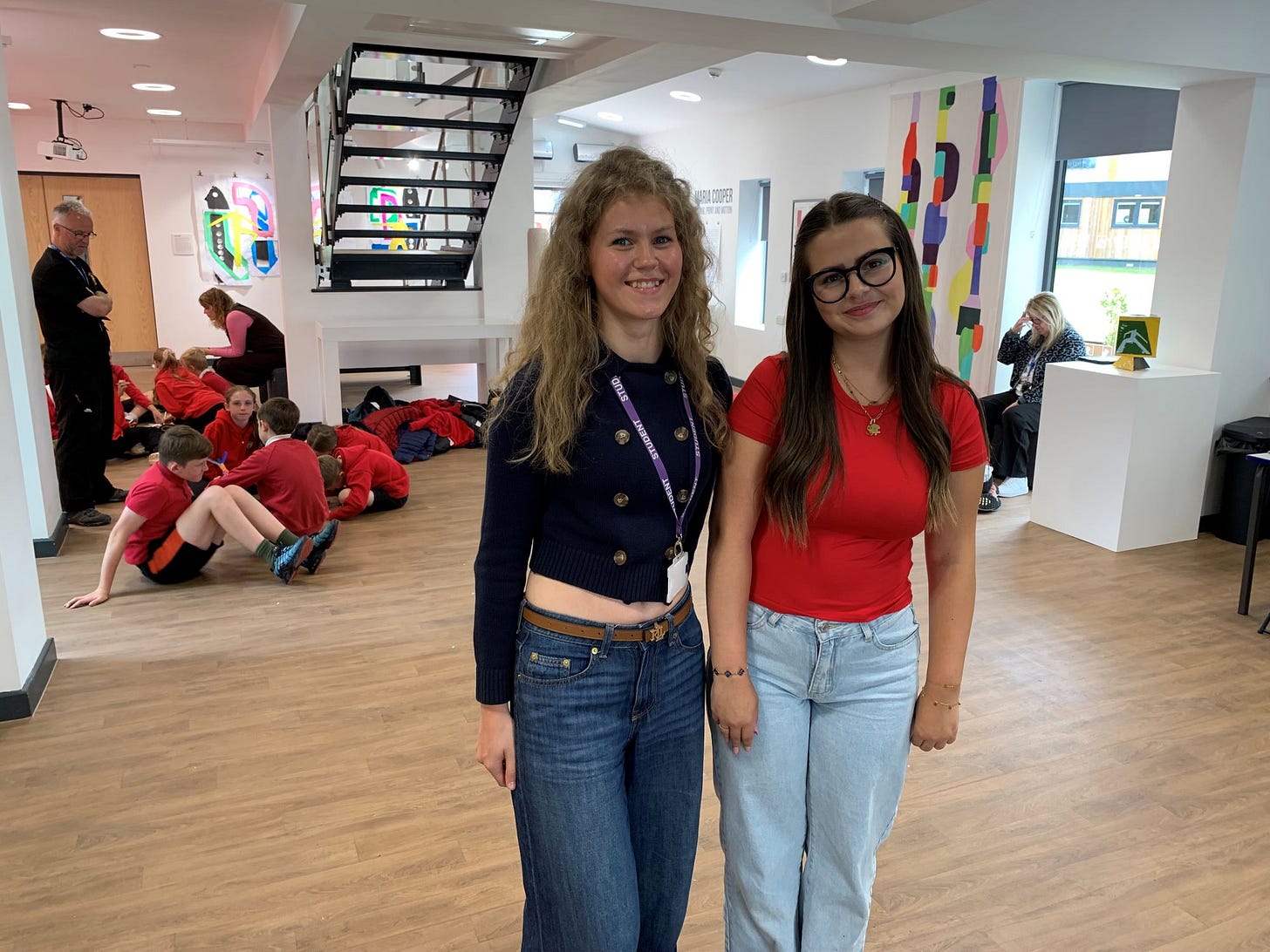"Who wants a gallery with a boring name?"
School's canine friend lives on through art
There’s a story behind the Dead Dog Gallery which guards the entrance to Durham Sixth Form Centre. Well, of course there is.
But it began with a “ridiculous vision”.
That’s what faculty head Ruth Watson (she was Robinson then) called it when I visited seven years ago after the Centre had achieved the accolade of Artsmark Platinum.
Artsmark Awards, accredited by Arts Council England, are given to schools for demonstrating exceptional commitment to arts and culture, with categories of silver, gold and, for those who really smash it, platinum.
It was Ruth, passionate about the arts, who had pressed for the Centre to go for an Artsmark Award. Asked by head Ellen Beveridge if she had time, she’d replied: “No, not really, but I think it’s important.”
Her efforts bore fruit, although she’d be the first to call it a team effort.
To gain an Artsmark Award, and especially platinum, it’s not enough just to have a busy art department, she told me. All must buy into it, with creativity embedded in the curriculum.
Ruth concluded our 2018 interview by explaining that “ridiculous vision” - of opening an on-site art gallery to serve both students and public.
It had come to her when visiting other high achieving schools in preparation for the Artsmark application, and seeing one with a “beautiful” though under-used gallery.
Durham Sixth Form Centre still has Artsmark Platinum status, although it must be reapplied for periodically, and Ruth is still there, although elevated to assistant principal.
And there, now, is the gallery – the, er, Dead Dog Gallery with its perky canine logo.
Today it's playing host to a party of primary school children under the supervision of Maria Cooper, the latest artist-in-residence.
Once it was the caretaker’s lodge, dating from early last century when the school at The Sands, in Durham city centre, was for girls only. But it had been used for all sorts of things and “never really loved”.
The head, as keen on the idea as Ruth, suggested it might be suitable. Money was raised and conversion work began… and then stopped.
“We’d got used to the building work but suddenly one day it ground to a halt and went silent,” recalls Ruth.
“It was the day they found remains.
“We had to get the authorities down to make sure it wasn’t anything sinister.”
What had been uncovered were the remains of a dog and the strong likelihood was that this was the final resting place of a boxer called Peter whose story had recently come to light.
He had been a regular attender, a sort of mascot, from his puppy days until his death in 1971, aged 12.
In The School on the Sands, the handsome book published for the 110th anniversary in 2023, Peter is seen in one of the formal photos, lining up with students and staff.
He must have been well-loved. Unwittingly, it seems his posthumous gift was a gallery name.
Ellen Beveridge, now chief executive of the multi-academy trust that runs Durham Sixth Form Centre, pops into Ruth’s office with a copy of the book that sets the history of the school in stone, or at least on paper.
She says if it hadn’t been for the time spent organising the archives ahead of the anniversary, the story might have stayed buried too.
“We wouldn’t have known about Peter and the Dead Dog Gallery wouldn’t have been the Dead Dog Gallery.
“Who wants a gallery with a boring name? Nobody would talk about it.”
In 2018 Ruth took me on a tour of the (very prominent) arty parts of Durham Sixth Form Centre and does so again.
It’s a funny time in the school, she says, because most of the 1,800 students are away.
The year 13s, who are Ruth’s special responsibility, have finished their exams (do I sense an airiness of spirit?) while the year 12s are on study leave ahead of theirs.
Exam moderators are in the building, looking over – to validate or otherwise – the teachers’ assessment of A level work.
It all looks fabulous to me. Just as well I’m not a moderator.
Photography teacher Paul Sudlow, who recently joined the staff, is discussing with head of art Mike Robinson the prospects of a student whose dazzling photographic work is displayed on a desk.
“One of our top students, I’d say,” suggests Mike. Paul reckons an A*. “Fingers crossed, should do well. Certainly at the top end for me.”
He says it’s difficult for students having a new teacher mid-way through a course. This one, though, has “worked really hard”.
A conditional offer at a London university seems in the bag but the teachers must hedge their bets since the professionally dispassionate moderator is yet to pass judgement.
In Mike’s graphics room, where every decorated wall screams for attention, Year 14 students are nose-to-screen.
“It’s a pleasure to come in here,” says Mike, a man clearly in love with his job.
A grant from The Wolfson Foundation was invested in Cintiq digital drawing tablets and every student gets a free Adobe Creative Cloud licence giving access to Photoshop and Design Illustrator.
“They’re programmes secondary schools struggle to have,” he says.
Ruth says Year 14 comprises a small cohort, about 20 students who have opted for a foundation year between A levels and whatever might come next. It can prevent false starts and potentially costly mistakes.
Here I meet 18-year-old Ace, from Newton Aycliffe, who at Durham Sixth Form Centre has loved graphic art. “We never really did it in my high school so it was here that I got into it,” she says.
Ace has been a keen gallery volunteer and also involved in the Creative Careers Conference scheduled for July 10 when professional practitioners and even recent leavers will be offering advice to students.
Another 18-year-old, Kaos (creative students tend to get creative with their names), has studied photography and fashion but opted for Year 14 because of uncertainty about her next move.
Band photography is already an absorbing side hustle and judging by what’s on her screen, she’s good at it.
“I’ve worked with quite a few bands and do posters and videos for them. A Norwegian band that came over messaged me randomly.
“I especially love taking photos of bands on stage. I was at one last night, a charity gig, but I live in Durham so can go anywhere – Darlington, Sunderland, Newcastle.”
Most people, says Kaos, simply call her ‘K’.
Ruth says Year 14 students are encouraged to engage in freelance work or enter competitions.
Along with the gallery, a design technology extension was added to Durham Sixth Form Centre’s Visual Arts Centre and here I meet teacher Becky Rubens who is making up work packs for students to do in the holidays.
“We’ve got 17 in this cohort and when they enrolled there was nothing here so they’ve taken a punt,” she says. “They seem to be enjoying it.
“I did 10 years at Gosforth Academy teaching the same course before I came here. It’s been a privilege being able to set things up from scratch.”
Design technology is about conforming to specifications, explains Becky. “It’s like the arts but more on the technical side.”
I’m introduced to fashion and textiles teacher Hannah Dobson-Milne who is also in charge of outreach, so responsible for the visiting primary school groups.
“We’ve had 300 Year 5s in just over two weeks so it has been a bit fraught,” she says cheerfully.
This work helps to fulfil an intended function of the gallery as a bridge between Centre and community, and it gives an insight into what (or who) is coming its way.
“It’s crazy how many of them haven’t done art,” says Hannah.
“Some don’t do it and some have done loads. It’s a bit of a mix.”
“It depends on the teacher," says Ruth. "Primary colleagues are teaching the whole curriculum and under such pressure to do maths and numeracy that the arts can often be sidelined.
“That’s why we’re doing this outreach work. It’s funded through a five-year partnership with the Gillian Dickinson Trust.”
Hannah says much depends on parents' level of interest. “You see that filtering through, the level of understanding or confidence that some children have with the arts.”
I hear of one little boy who was “in a strop” and said straight away he didn’t like art. Moments later he was happily modelling with tin foil.
So, finally, to the gallery where a fine job has been made of converting and extending the caretaker’s cottage.
Here I find an air of intense concentration.
Children from Nettlesworth Primary School are colouring in little cardboard dancers to hang from the ceiling, mimicking the figures made by artist-in-residence Maria Cooper.
Good as gold, they huddle in groups or stretch out on the floor.
Aided by sixth form volunteers Amber and Summer who are set on careers in primary education, Maria had the kids dancing before asking them to translate their movements into art.
Like previous Dead Dog Gallery artists-in-residence, she was a student here before going off to the Northern School of Art and then the Royal College of Art.
She did lots of art at school, Maria says. “I remember sticking multi-coloured shapes at primary school. It’s an easy thing for kids to get into.
“By the time I got to GCSEs my teacher was into textiles, so encouraged me to do that. Here at sixth form, I also did ceramics.
“Now I’m an artist and designer. I have a studio at Ushaw and work three days a week for the Orla Kiely fashion label.
“I’d counter that art isn’t a proper job. The skills you get can be used in lots of areas, and it doesn’t have to be a job. It can just be a passion, something you do at home.”
She says she has loved working with the children.
“It’s been really interesting to see how they begin to tackle things I do on a daily basis. Some say they’re not very good at art but it’s not about that – it’s about enjoying colour and shape.
“Because people get told they’re not good at art, they think they’re not. Just do it anyway. It brings people joy, I think."
Maria’s exhibition at the Dead Dog Gallery is a joyous exploration of movement and colour. It runs until July 18 and the gallery is open to the public on Thursdays and Fridays, 10am to 4pm.
Ruth, being Ruth, is keen to see those hours extended.
It should happen. The Dead Dog Gallery is a dead good gallery and just what Durham, under-resourced in this area, needs.




